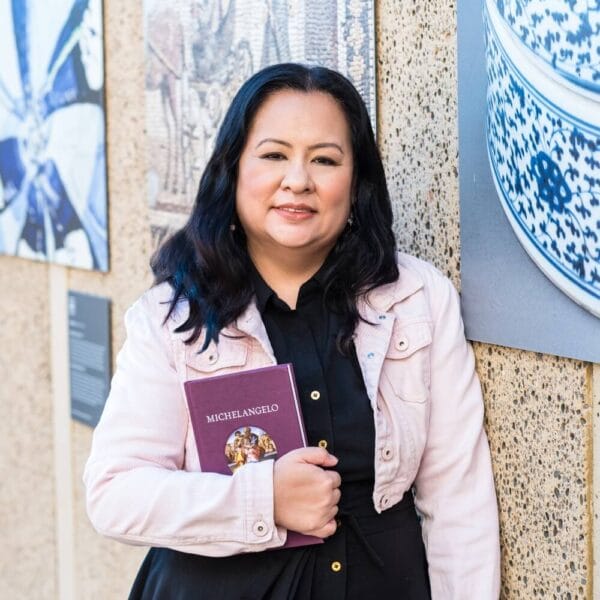
A travel website should transport visitors emotionally before they travel physically. Through immersive visuals, storytelling, and seamless navigation, you can spark curiosity and excitement, helping visitors imagine themselves already there.
Authentic imagery, local experiences, cultural highlights, and user-friendly design all play a role. When paired with clear calls to action and an easy booking process, these elements turn curiosity into conversion.
Travelers expect simplicity and inspiration. A slow or confusing website can break the sense of adventure before it begins. By optimizing your website’s design, speed, and storytelling, you create a digital journey that builds trust and excitement long before takeoff.
“The world is a book, and those who do not travel read only one page.” — Saint Augustine
I was born in the Philippines and moved to San Diego when I was 9 years old. That journey across the Pacific taught me something profound about travel: the anticipation begins long before you pack your bags.
Today, that anticipation starts on your website.
Your travel website isn’t just a booking platform. It’s the first destination your visitors experience.
And if it doesn’t spark wanderlust in the first 7 seconds, you’ve already lost them.
Here’s what most travel websites get wrong: they sell logistics instead of dreams.
Think about it:
But travelers don’t book trips. They book transformations.
Your website should tap into three psychological triggers:
People visit travel sites when they’re stressed, bored, or dreaming. Your homepage hero shouldn’t show a hotel exterior. Show the view from the balcony at sunrise. Show the moment of arrival, not the mode of transport.
Humans are wired for exploration. Use interactive elements that let visitors “discover” hidden gems, not just browse pre-packaged tours. Think treasure maps, not catalogs.
We travel where others have found joy. But instead of generic testimonials, show transformation stories. “Sarah from Seattle” doesn’t move anyone. “I came for the beaches but found myself through salsa lessons” does.
Museums taught me something powerful: virtual experiences don’t replace physical visits, they create hunger for them.
The same applies to travel websites.
Don’t just show. Immerse.
Here’s how:
Static gallery images are dead. Use 360° views that let visitors stand on that cliff edge, spin around that hotel room, or navigate through that market street.
Control creates connection.
Add subtle audio: waves crashing, market chatter, rainforest birds. Sound triggers emotional memory faster than any image.
Show your destination breathing. Sunrise to sunset timelapses. Seasons changing. Festivals erupting.
Movement creates urgency.
End each virtual tour with something they can’t fully experience online. The taste they need to try. The dance they need to learn. The summit they need to climb.
Leave them hungry.
73% of travel planning happens on mobile devices. But here’s the deeper truth: mobile planning happens in micro-moments.
Your mobile site needs to respect these stolen moments:
Everything actionable should be within natural thumb reach. Top navigation is dead for mobile. Bottom navigation bars with 4 max options: Explore, Plan, Book, Dream.
Don’t dump everything at once. Start with inspiration, reveal details as they engage. Think Instagram Stories, not encyclopedias.
Let them download dream boards, save itineraries, access maps offline. The planning continues even when the connection doesn’t.
Friction kills wanderlust.
Your booking flow is where wanderlust meets reality. Don’t let reality win.
While they’re entering payment details, show them what they’re buying into. Subtle background videos. Countdown to adventure. Weather at destination.
Hidden fees are wanderlust killers. Show total costs upfront. Surprise them with what’s included, not what costs extra.
Your confirmation page shouldn’t feel like a receipt. It should feel like the beginning of an adventure. Include:
Travel SEO isn’t about ranking for “hotels in Paris.” It’s about capturing the moment someone types “need to escape somewhere magical.”
Dreaming Stage:
Planning Stage:
Booking Stage:
Stop measuring bounce rates. Start measuring dreams sparked:
As someone who’s crossed oceans and cultures, I know travel websites must honor both the traveler and the destination.
Your website should:
Because the best travel websites don’t just sell destinations. They build bridges between cultures.
Every element of your travel website should answer one question: “Does this make them want to pack their bags?”
If your hero image doesn’t create longing…
If your copy doesn’t paint possibilities…
If your booking flow doesn’t maintain magic…
You’re not building a travel website. You’re building a brochure with a payment form.
Remember:
People don’t visit travel websites to plan trips. They visit to give themselves permission to dream.
Make sure your website grants that permission within the first 7 seconds.
Because in the digital age, wanderlust begins with a click, not a ticket.
Ready to transform your travel website from a booking platform into a wanderlust machine?
Let’s create digital experiences that move people before they even leave home.
“Travel makes one modest. You see what a tiny place you occupy in the world.” – Gustave Flaubert

Frances Naty Go, Founder of Goldlilys Media, transforms websites into strategic masterpieces for museums, nonprofits, health & wellness brands, higher education, life sciences, travel companies, personal brands and small businesses. With a Computer Science degree from UC San Diego, she specializes in creating digital experiences that educate, engage, and inspire action. Ready to make your digital presence unforgettable?





